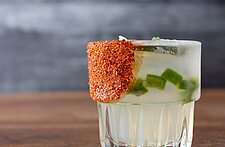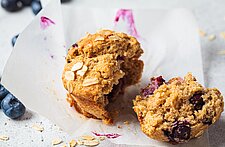Baked goods and dessert mixes have had less than stellar performance at retail. Ironically, as the economy has been improving, sales of baked goods at retail have slowed. Our research has shown that total retail sales of baked goods and dessert mixes were flat from 2013 to 2014 at $2.7 billion, and by 2019 they will decline to $2.5 billion.
Perhaps influenced by celebrity bakers and chefs, and certainly by a desire for healthier eating, more than half of all home bakers (56 percent) now bake from scratch. Of those who still buy baking mixes, 67 percent want premium ingredients and gluten-free, for example, is not showing signs of going away any time soon. America is aware of the obesity epidemic, and in 2014 the obesity rate climbed to 36 percent, alarming enough for consumers of baked goods to want smaller portions (about 39 percent). Even the growth of in-store, ready-to-eat baked goods is beginning to flatten as more of us are gaining confidence in the economy and are eating baked goods in restaurants.
The Foodservice Opportunity
Quality ingredients, celebrity bakers and chefs, smaller portions (“we’ll share”) and scratch recipes encapsulate just a few of the many reasons why foodservice and baked goods are faring so well. At a time when the category is slowing or declining in the groceries, the number of foodservice operators offering just cakes has increased more than 9 percent.
CLICK HERE to check out PART 1 of this Foodservice Dessert Trend Series
Reflecting the desire for delicious cake and cupcake indulgences, penetration of these desserts at the high end is evident as 74 percent of fine dining establishments and 65 percent of casual dining chains have cakes on the menu. Far and away the number one cake flavor is chocolate, and far behind come other flavors starting with carrot, then cupcake variations. This is true in virtually all regions of the U.S. There are a few more interesting flavors showing growth including rum, apple and “Black Forest.”
However, if we analyze the most popular cake flavors appearing on all menus and across all categories, there are no huge surprises. The top 15 flavors are chocolate at 33 percent, with vanilla and carrot in second and third position. Within the top 15 are also fudge and dark chocolate, so chocolate remains strong, with vanilla bean in 15th place.
The new cake flavor most frequently introduced is “spiced,” with vanilla bean the fastest growing. The most mainstream of all cake flavors in foodservice is “butter,” with chocolate certainly being the most mature and established flavor appearing on 67 percent of all menus.
Cookie Monsters
The long-time staple baked-good - the cookie - made the big-time leap from granny’s kitchen to numerous foodservice venues. From 2010 to 2015, cookies as a menu item went from mentions on 297 menus to 411. As opposed to cakes that dominate fine dining, the cookie is a profit center for fast casual and QSR venues.
In terms of popular cookie varieties, the top two spots are occupied by chocolate chip and chocolate, followed by oatmeal, then raisin and peanut butter. The fastest growing cookie form is the biscotti, reflective of the ever-present espresso bar.
CLICK HERE for dessert trends delivered to your inbox weekly!
The top cookie flavors are dominated by chocolate, including chocolate chip, dark chocolate, triple chocolate and milk chocolate. Also in the top group are peanut butter and lemon. An interesting note on peanut butter flavor is that it is among the fastest growing flavor in all regions in foodservice.
If we look at cookie flavors across the board, in terms of new flavor introductions coconut and butter cookie are quite popular, with triple chocolate and vanilla bean showing the highest growth. Mainstream popular flavors on many menus include lemon and ginger. Again, and not surprising, chocolate chip and chocolate are mature cookie flavor offerings found as standards on most menus.
While baked goods have gone flat or retreated from grocery, cakes and cookies have shown growth in foodservice with both new and standard flavors.





